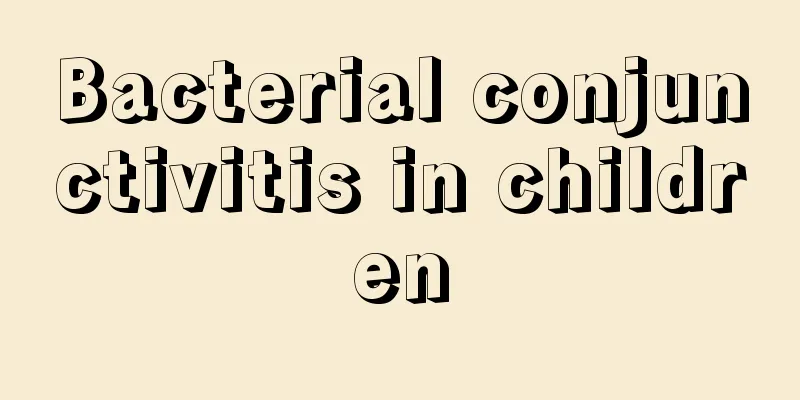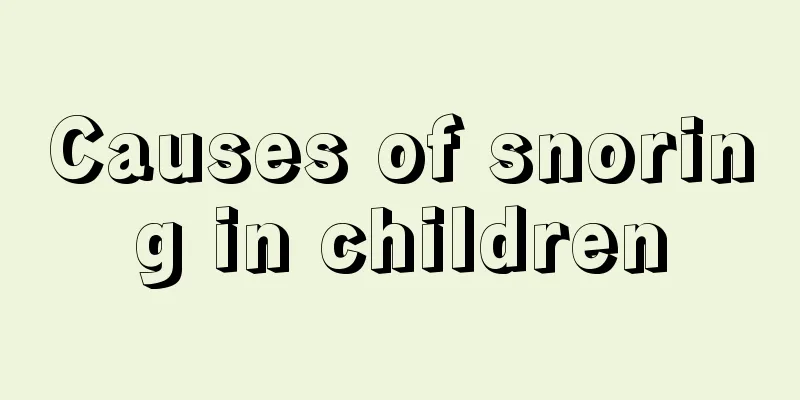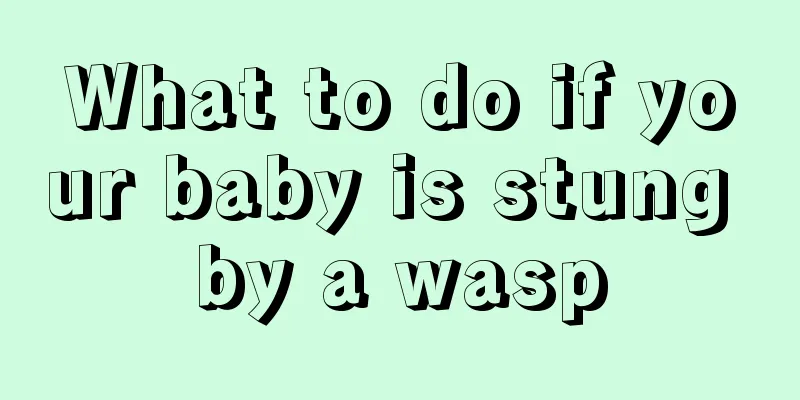Bacterial conjunctivitis in children

|
The occurrence of bacterial conjunctivitis in children can cause discomfort in the baby's eyes, which can be observed with the naked eye. The early treatment is relatively easy, but if the infection is serious, it will not be easy to treat. Viral conjunctivitis is more likely to lead to a weakening of the immune system and thus infection with other diseases. If you find that your baby is unwell, seek medical attention immediately. Viral conjunctivitis in children is often accompanied by symptoms of respiratory tract infection such as cough and sore throat, as well as manifestations of viral infection such as swollen preauricular lymph nodes and generalized myalgia. One eye is often the first to become infected, and the other eye can be easily infected. The most common clinical disease is epidemic hemorrhagic conjunctivitis, commonly known as "pink eye". This disease is highly contagious and often breaks out in summer and autumn. The disease develops rapidly, with severe eye irritation symptoms and less secretions, and subconjunctival punctate or flake hemorrhages are the most common. Another common type of viral conjunctivitis in children is epidemic keratoconjunctivitis, which is highly contagious and has caused an epidemic around the world. The disease has severe symptoms, including eyelid edema, hyperemia of the conjunctiva, pseudomembrane formation, and specific lesions of the cornea. Viral conjunctivitis is self-limiting to a certain extent, and ophthalmic treatment can relieve symptoms, shorten the course of the disease, and reduce the pain of children.Bacterial conjunctivitis The ocular surface of a normal person is colonized with certain bacteria, but when encountering highly virulent bacteria or conditional pathogens, it will cause bacterial conjunctivitis. Bacterial conjunctivitis in children mainly includes acute catarrhal conjunctivitis and chronic catarrhal conjunctivitis, while gonococcal conjunctivitis mainly occurs in newborns. Acute catarrhal conjunctivitis is mainly caused by highly virulent bacteria. It has an acute onset and often affects both eyes. It can occur one after the other. The main eye symptoms are foreign body sensation in the eyes, tearing, and sticky or purulent secretions. This disease is transmitted through contact, with secretions being the direct source of infection. It is easily transmitted in school or at home. Parents must pay attention to the eye hygiene of their children. Chronic catarrhal conjunctivitis has a long course and is prone to recurrence. Its symptoms and signs are milder than those of acute catarrhal conjunctivitis. However, if children have repeated mild red eyes, increased secretions, and foreign body sensation, the cause should be carefully investigated to determine whether it is dacryocystitis, blepharitis, rhinitis, or other diseases. Gonorrheal conjunctivitis is more common in newborns. It is infected at birth through the birth canal of mothers with gonococcal vaginitis. It can also be infected through other contact routes. The main feature is a large amount of pus in the conjunctival sac. If not treated in time, it will infect the cornea and cause perforation in a short period of time.
It is an inflammation caused by infection with Chlamydia trachomatis, commonly known as "trachoma", which was once the leading cause of blindness in my country. However, with the improvement of living standards, improvement of environmental sanitation and progress in science and technology, "trachoma" has almost disappeared in most large and medium-sized cities. However, trachoma is still prevalent in some countries and regions with relatively backward economy and culture and poor sanitary conditions. Trachoma is mainly transmitted through contact, and the prevalence of trachoma in children is closely related to the prevalence of trachoma in their parents. It often develops acutely or subacutely, with symptoms such as red eyes, foreign body sensation, and sticky secretions. Ophthalmological examination shows lesions in the fornix conjunctiva and corneal pannus formation. If not treated in time, some serious complications will occur in the late stage, causing damage to multiple eye tissues.
Children are active by nature and full of curiosity about unknown things. They often accidentally get some acidic and alkaline chemicals into their eyes, causing damaging conjunctivitis. More serious injuries can cause damage to the cornea and seriously affect visual function. This type of conjunctivitis has a clear history of contact with eye chemicals and has an acute onset, requiring prompt medical treatment to reduce damage. Therefore, children should be educated to improve their safety awareness at school or at home. |
<<: How to make steamed banana cake for baby?
>>: The baby repeatedly asks to go to the toilet before going to bed
Recommend
What is the reason for the redness and pain of the little girl's vulva?
When a little girl has redness and pain on her vu...
Do children with acute rash need to avoid certain foods?
In life, when our bodies have some symptoms of di...
What to do if your three-year-old baby has tooth decay?
It is relatively rare for a three-year-old baby t...
What should children with anemia eat?
Anemia in young children is a common occurrence a...
What issues should 4 and a half months old babies pay attention to?
Newborn babies need to pay attention to their phy...
Causes and treatment suggestions for children's knee pain when sleeping at night
When children are very young, many different situ...
What should I do if my five-year-old child coughs and has phlegm?
When a child has a cough, the parents are probabl...
Treatment of white mouth in newborns
The whiteness of the mouth of newborns has attrac...
Treatment of baby's nosebleed at night
The birth of every new life will make our parents...
What to do if your six-month-old baby has a cough and runny nose
Babies who are half a year old, or just six month...
What to do if your child is allergic
Children are often weak and sickly when they are ...
Two and a half year old baby walks with a limp
As the baby grows up day by day, he learns more a...
Reasons for red upper eyelids in newborns
A baby is the center of a family. Any problem wit...
What ointment should I use on a child's scratched face?
Children are naughty. Often when several children...
What to do if your baby's lips are broken
Children are lively and active, and they have no ...









